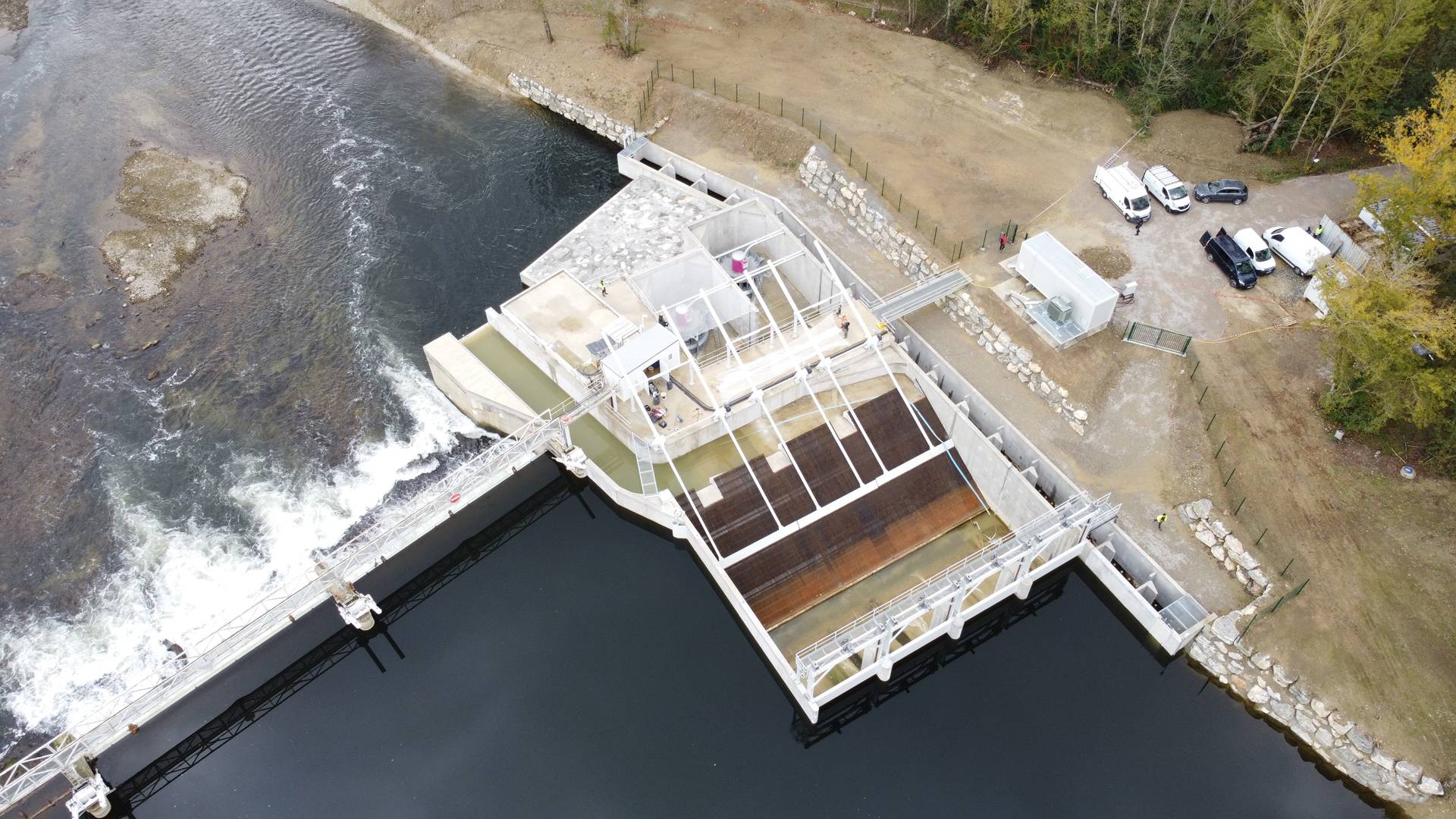A potentially deadly problem gains attention due to climate change6 min read
Lesedauer: 5 MinutenThe future of hydropower in times of an accelerating change of the world’s climate will be strongly affected by the subsequent changes and geographical shift in precipitation (IPCC, 2013). This will have impacts on the ecology and possible uses of rivers. With the growing accuracy of models, predictions can be made for both global and regional water availability. Following modelling results, there is a consensus that extreme weather events such as heavy rainfall are on the rise (Jjunju et al., 2022). In addition to well-known consequences such as floods or landslides, there is also a little-known danger for fish and aquatic invertebrates introduced by hydropower plants: total dissolved gas (TDG) supersaturation.

With gas supersaturated liquids are primarily known to us from beverages, where typically CO2 is dissolved under pressure in the liquid. This creates for example carbonic acid in mineral water. The opening of the bottle or can leads to a pressure drop leading to gas bubbles escaping the liquid, representing a natural way of degassing. This example illustrates the principle of TDG supersaturation, which follows Henry’s law: the solubility of gases in liquids is directly proportional to the pressure in the liquid. Supersaturation exists when there is too much gas dissolved in a liquid in relation to the liquid’s pressure. Temperature also has an influence on the solubility of gases, which is less relevant in this case.
A crucial role for the turbine type
The most important parameter for energy generation in hydropower plants is, next to the flow rate, the head, which determines the pressure. If air is entrained into the water that flows into the hydropower plant’s waterways and there subjected to high pressure, it dissolves in the water. This can occur in medium or high-pressure power plants, for example, when air is introduced into the system due to blockages or inadequate sizing of the inlet. Often, this occurs during heavy rainfall events and other high flows such as snowmelt, but also in cases where the inlets are too shallow or under-dimensioned. The turbine type is important for the formation of TDG supersaturation. In most Pelton turbines, the water is adequately aerated when it leaves the turbine blades, while in Kaplan and Francis turbines, there is hardly any degassing due to the full submergence. In other cases, TDG supersaturation can occur at high dams on large rivers when, during flood discharge, air is introduced into deep water depths below the dam. Measurements have shown TDG saturation levels of up to 120% in connection with turbine aeration for operation at maximum capacity (Pulg et al. 2018).

recognizable – a consequence of the gas. supersaturation.
Hazardous to organism
TDG supersaturation can have potentially severe consequences for fish and aquatic invertebrates in the water ways downstream the hydropower plant. When fish are exposed to increased TDG saturation, a condition called gas bubble disease can occur, which shares similarities with the decompression sickness in humans. This condition is characterized by the formation of gas bubbles within the organism, often in the fins or eyes of fish, due to an increase in the concentration of gases. The severity of the disease depends on the level of TDG supersaturation and the exposure time as well as the species of fish and its size and age. Acute cases often lead to gas embolisms within the blood vessels or vital organs, resulting in death. Less severe cases are reversible but may lead to secondary injuries such as fungal infections and stress. Gas bubble disease can occur even at low levels of TDG supersaturation and can be lethal at levels above 110% TDG saturation (with 100% saturation describing the normal state). This value is also defined as the threshold in some US states and in Canada for rivers with a water depth of more than 1 meter (Weitkamp & Katz, 1980). Studies in North America, China and Norway show that TDG supersaturation caused by hydropower is a widespread and underestimated problem. In the United States and Canada, the first investigations into hydropower-induced TDG supersaturation were conducted as early as the 1960s. There, as well as in China, the problem is mainly occurring at high dams. In contrast, in Norway, where Francis turbines are predominantly used for medium to high head installations, TDG supersaturation is a major issue. The international research project SUPERSAT, led by the Norwegian Research Centre (NORCE), has in recent years been investigating the prevalence of TDG supersaturation in Nor- way, Germany and Austria. The research within Austria has been conducted by the University of Natural Resources and Life Sciences (BOKU), while the University of Koblenz-Landau was responsible for the German part of the research. Preliminary results show that a significant proportion of large Norwegian power plants have a high to very high risk of creating TDG supersaturation. Work is currently underway to develop comprehensive monitoring of the downstream water ways (Pulg et al., 2020).

Looking for technical solutions
The formation of gas oversaturation can be prevented by avoiding air entrainment into pressurized water. This can be ensured, for example, by using special hydraulic structures at dams or by appropriately dimensioning power plant inlets. If the formation is unavoidable, degassing by aeration can be accelerated by venting water over weirs, thresholds or through deflectors (Pulg et al., 2018). In Canada, the use of ski jump high-water release structures for degassing has been successfully tested (Kamal et al., 2020). In the Norwegian DeGas project, further technical solutions for rapid degassing of dissolved air are being developed, with a focus on the use of power ultrasound and bubble curtains (Rognerud et al., 2020). Preventing TDG supersaturation in water ways downstream hydropower plants will become more relevant due to climate change. The aforementioned increase in heavy rainfall events is expected to lead to more TDG supersaturation events, particularly in mountainous regions with reservoir-type power plants using Francis turbines and secondary inlets. Therefore, when TDG supersaturation is suspected, a measurement system should be installed to continuously monitor the TDG level at the power plant outlet. Combined with data from power plant operations, possible causes of TDG supersaturation can be identified and fish deaths can be prevented. This contributes to achieving the criteria of environmental regulations, animal, nature and species protection, as well as the Water Framework Directive and the EU Taxonomy.
Share:

